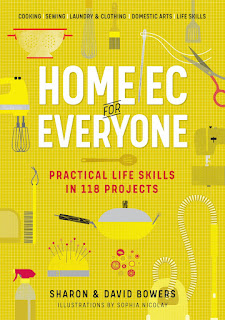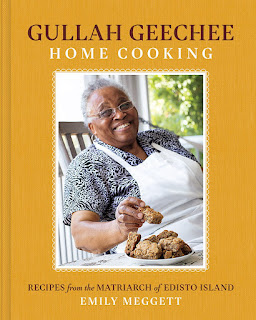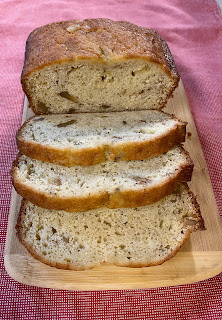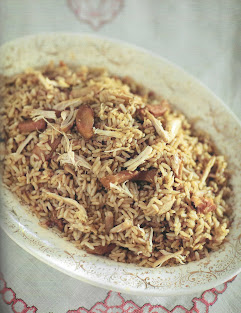Two New Cookbooks (Weekend Cooking)
 I know summer officially starts on June 21, but here in the States, we consider Memorial Day weekend as the real start of the season. We don't have a lot plans for the holiday, but hamburgers and hotdogs are definitely on the horizon.
I know summer officially starts on June 21, but here in the States, we consider Memorial Day weekend as the real start of the season. We don't have a lot plans for the holiday, but hamburgers and hotdogs are definitely on the horizon.
Today I want to introduce you to two cookbooks I've been enjoying this spring. Next week, I'll review two new vegan cookbooks.
The first cookbook is perfect for those of us who like to host friends and family for casual dinners but need to figure out how to accommodate a variety of eating styles, allergies, and so on. Anna Stockwell's new cookbook For the Table is full of advice and menus to help you make all your guests feel well fed and cared for, no matter their diet. Thanks to Abrams for providing me with a review copy as part of the Abrams Dinner Party.
Besides recipes, Stockwell offers advice on how to prepare for dinner guests, gives us ideas for conversation starters and games, and provides timeline and prep advice for each menu. Note, too, that every recipe in For the Table is clearly marked as gluten-free, vegan, meat-free, dairy-free, and/or pescatarian. As an added bonus for those of you who are gluten sensitive, every recipe in this book is safe for you to eat because Stockwell herself must avoid gluten.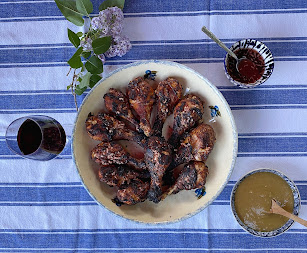 To be honest, I'm not generally a fan of menu cookbooks, but For the Table is an exception for a couple of reasons. First, her menus are based on two principal dishes, either of which could stand as the main, though one is generally more protein heavy than the other. Stockwell suggests options for sauces and side dishes and provides a quick recipe or two to accommodate what she calls "other dietary restrictions." Of course, you need not follow the menus to a tee, and I swapped dishes to suit our tastes and needs. Finally, Stockwell tells us when a recipe can be halved or quartered to serve fewer people, so the recipes can be adapted for everyday use.
To be honest, I'm not generally a fan of menu cookbooks, but For the Table is an exception for a couple of reasons. First, her menus are based on two principal dishes, either of which could stand as the main, though one is generally more protein heavy than the other. Stockwell suggests options for sauces and side dishes and provides a quick recipe or two to accommodate what she calls "other dietary restrictions." Of course, you need not follow the menus to a tee, and I swapped dishes to suit our tastes and needs. Finally, Stockwell tells us when a recipe can be halved or quartered to serve fewer people, so the recipes can be adapted for everyday use.
Here are a couple examples of menus: For winter, serve red wine-braised short ribs with Gorgonzola baked polenta. Round out the menu with a salad and a gremolata. Stockwell offers quick pantry and freezer alternatives for vegetarian or pescatarian guests. One of the summer menus stars za'atar grilled eggplant and zucchini served with a blue cheese and tomato salad. Add-ons include sauces for the veggies and chickpea scocca. Serve a different salad if you have dairy-free and vegan guests.
I made Crunchy Winter Salad (see recipe below), Spring Greens with Fried Dates, Grilled Paprika Chicken with Garlic Vinegar (see my photo), and the grilled zucchini and eggplant mentioned above. I have plenty more dishes marked to try, especially for later in the season when the farmer's markets are in full swing.
Recommended for pretty much everyone. I think gluten-free cooks will especially like For the Table by Anna Stockwell, but really it's a cookbook that most of us will find useful. The subtitle says it all: "Easy, adaptable, crowd-pleasing recipes." The second cookbook is for all you carb lovers. That Noodle Life by Mike Le and Stephanie Le (of the blog I am a Food Blog) is your guide to all things pasta, from Asian-inspired noodle bowls to lasagna, to mac and cheese. Thanks to Workman for providing me with a copy of this cookbook as part of their Workman Ambassador program.
The second cookbook is for all you carb lovers. That Noodle Life by Mike Le and Stephanie Le (of the blog I am a Food Blog) is your guide to all things pasta, from Asian-inspired noodle bowls to lasagna, to mac and cheese. Thanks to Workman for providing me with a copy of this cookbook as part of their Workman Ambassador program.
Stepping beyond just noodle recipes, the Les provide a guide to all the different kinds of available noodles, instructions on properly preparing noodles, and how to top and serve your finished dish. I especially like the features, which are riffs on a type of noodle or noodle dish. For example, the authors give us ten ideas for using various kinds of instant noodles in soups, a section all about laksa, and a fun feature on using lasagna noodles.
The recipes themselves are easy to follow and are fairly inventive. That Noodle Life tells us how to make Oven-Roasted Yakiudon Al Pastor (taco-inspired noodles), Philly Cheesesteak Noodles, Spicy Sesame Chili Oil Noodles (really easy, really good), Garlic-Butter Bucatini with Oyster Sauce, Pumpkin Sage Mac and Cheese, and Wonton Noodle Soup Like They Do in Hong Kong. I've made several noodle dishes from That Noodle Life. I admit I was drawn to the quickest, easiest dishes, but ambitious cooks will find plenty of recipes to keep them occupied. Those who are able to get fresh seafood or have a local well-stocked Asian market will find new ideas for serving their favorite ingredients.
I've made several noodle dishes from That Noodle Life. I admit I was drawn to the quickest, easiest dishes, but ambitious cooks will find plenty of recipes to keep them occupied. Those who are able to get fresh seafood or have a local well-stocked Asian market will find new ideas for serving their favorite ingredients.
Recommendation: If you like noodles, you should give That Noodle Life by Mike and Stephanie Le a try. Vegetarians will find a number of appropriate recipes; vegans and gluten-free eaters will want to look through the cookbook before buying. Visit I am a Food Blog to learn more about the Les and to try some of their recipes.
The following recipe is from For the Table. As one of my fellow Abrams Dinner Party participants said, "It may be called a winter salad, but it's good all year round." I used both daikon and watermelon radishes because the little bit of pink was pretty.
Crunchy Winter Salad
Serves 6; can be halved
- 1 large or 2 small daikon radishes, peeled and thinly sliced
- 2 fennel bulbs, thinly sliced
- 4 ribs celery, thinly sliced on a bias
- 2 green apples, thinly sliced
- 1 teaspoon kosher salt
- 2 tablespoons white balsamic or white wine vinegar
- 1 cup (40 g) loosely packed fresh basil leaves
Note: The recipe and scan are used in the context of a review; all rights remain with the original copyright holders. The photo is my own.
Shared with Weekend Cooking, hosted by Marg at The Intrepid Reader (and Baker)Click for more

.JPG)

.png)



